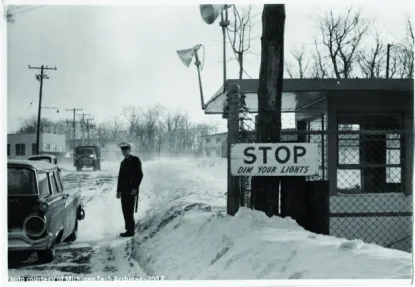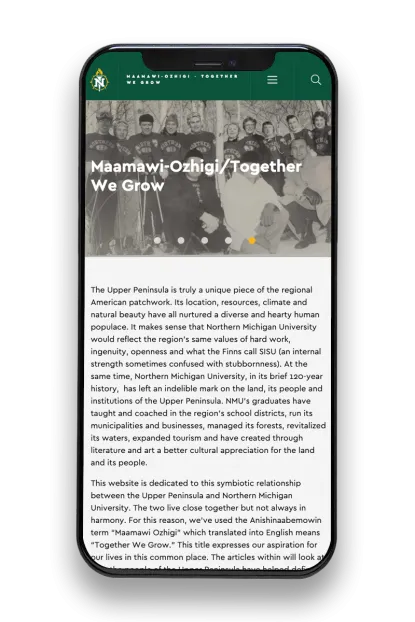
Time Travel Goes Digital
After a successful first year, NMU’s Upper Peninsula Digital Network, UPLINK) program, which seeks to digitize historical records and family heirlooms throughout the Upper Peninsula, is collaborating with the Keweenaw Time Traveler (KeTT) in order to improve the region’s access to historical manuscript material maintained by U.P. heritage organizations.
While UPLINK and KeTT are similar, there’s a distinct difference between the two. “What UPLINK does is identify and digitize historically valuable records and make them available to scholars, students, and the general public online,” UPLINK Director and NMU Archivist Marcus Robyns said. “The KeTT takes that step a bit further by using maps and global interface systems, particularly the maps and other archival records from the Copper Country area. All of that material is interconnected and cross-referenced so that a researcher visiting a site can trace a person from the past through the Keweenaw from the records that they had left at that time. Hence the name, ‘Time Traveler.’”
Doing that takes a lot of work, though. Forty-seven faculty, staff and students work on KeTT to sift through, cross-reference and digitize materials, whereas UPLINK has two staff members and three students. KeTT plans to eventually cover the entire Upper Peninsula, and Robyns is optimistic that the partnership will expand. To grow, though, both UPLINK and the KeTT need help with some of the heavy lifting—the kind of help that only communities can give.
“KeTT is sort of a crowd-sourcing program, where people can actually contribute their own stories about an individual, building or business,”
Robyns explained. “While it’s a step up from what we do at UPLINK, we’re open to having volunteers come in and help us digitize material. In fact, UPLINK is designed to encourage heritage organizations to contribute labor to digitize materials.”
To that end, UPLINK is traveling to communities across the U.P. to discuss the importance of preserving local history—and doing it. In Ontonagon, for instance, UPLINK was able to digitize 1,134 files of records and belongings brought in from the community.
However, the process just got easier for everyone with Mobile Digitization Kits.
"Heritage organizations that are members of UPLINK can essentially borrow these kits free of charge, take them back to their heritage organization site, and digitize their collections there,” Robyns said. “We provide them with basic technical training, and show them how to add their collection to our database available on our website.”
Robyns also has an idea for adding UPLINK into NMU’s curriculum, “Right now, I’m working with English, History and Earth, Environmental and Geographical Sciences to offer an experimental, interdisciplinary, collaborative course in the fall focused on research and contributing to UPLINK and the KeTT.”
— By Ian McCullough

New U.P./NMU Website
Upper Peninsula and Northern Michigan University. It was created and hosted by the Beaumier Center, with the idea, support and guidance of Dr. Jon Saari, professor emeritus of history.
Because the relationship between the region, the university and its people is always changing, and because there are so many stories to tell, this website will continually change and expand as well. The site has three main sections. "What is the Upper Peninsula" looks at the history of the region and the university itself. "The University for Everyone" looks specifically at the connections between NMU and the region. "Living in the Upper Peninsula" is still being developed and will include opportunities for students, alumni and staff to interact through blogs about the region's way of life.
